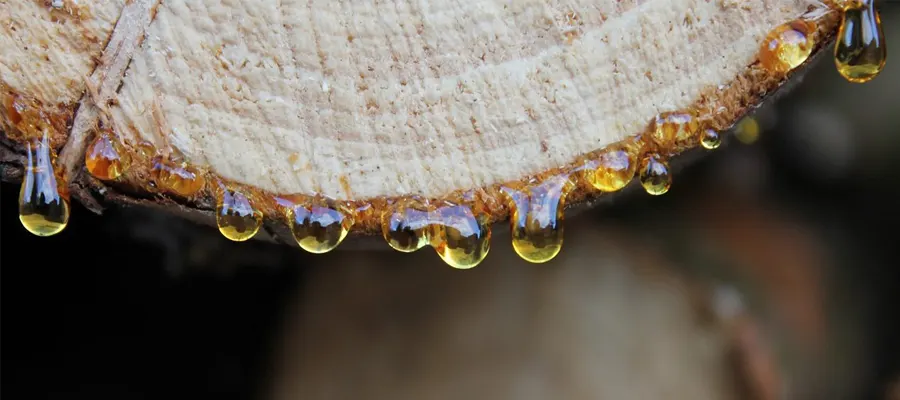1.- Composition of incense
Composition of incense
Throughout history, the following have been used a lot of ingredients for the manufacture of the Natural incense. Some of them ceased to be used at a certain point in history and became replaced by different ones. In the following, we will leave a list with the most widely used today.
2.- Most used ingredients
Composition of incense
2.1- Copal resin
The copal is the name given to a number of resins aromatic plants, at an intermediate stage between the polymerisation and the tightening of the resin and the amber. This resin is extracted by exudation of copal plants.
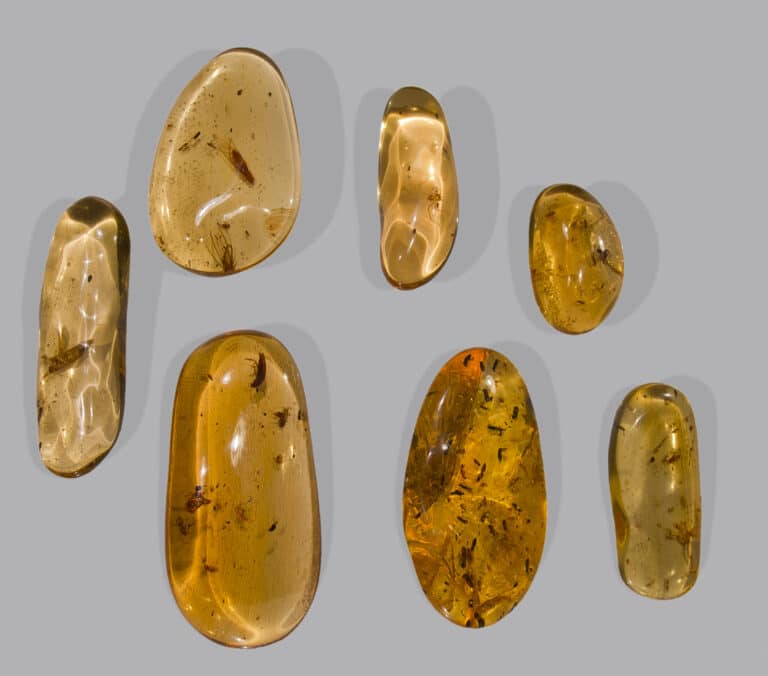
Your origin is American and was widely used as incense for the Mesoamericans of the seniority during the spiritual ceremonies that were held in the temples. It is the colour of the amberbut odourless so it is highly recommended to use it mixed with essences and aromatic oils.
Copal Resin
The copal is the name given to a number of resins aromatic plants, at an intermediate stage between the polymerisation and the tightening of the resin and the amber. This resin is extracted by exudation of copal plants.

Your origin is American and was widely used as incense for the Mesoamericans of the seniority during the spiritual ceremonies that were held in the temples. It is the colour of the amberbut odourless so it is highly recommended to use it mixed with essences and aromatic oils.
2.2- Gomorresin or Myrrh
The myrrh (from Latin myrrha) is an aromatic resinous substance with the properties of medicinal. It is obtained by making an incision in the bark of the tree. Commiphora myrrhaIt secretes a yellow, gummy resin, which dries to irregular shapes and reddish-brown tones.
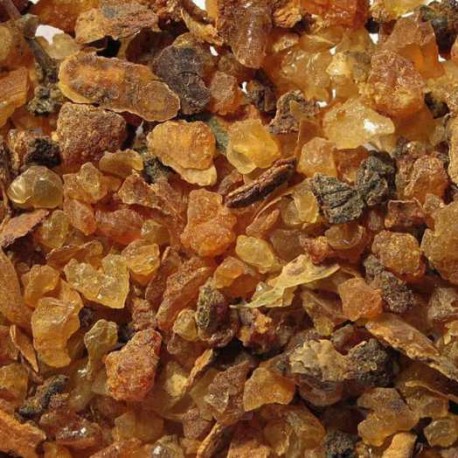
It grows in the north-east of Africain Arabia (the one from the Ẓufār) and in the region of Anatolia (Turkey). In ancient times, it was widely used for the production of incense, perfumes y ointments, to dilute ink in the papyriand also for embalm to the dead. In addition to its traditional uses, it is nowadays widely used as a oral stimulant, tonic and antiseptic.
Gomorresin or Myrrh
The myrrh (from Latin myrrha) is an aromatic resinous substance with the properties of medicinal. It is obtained by making an incision in the bark of the tree. Commiphora myrrhaIt secretes a yellow, gummy resin, which dries to irregular shapes and reddish-brown tones.

It grows in the north-east of Africain Arabia (the one from the Ẓufār) and in the region of Anatolia (Turkey). In ancient times, it was widely used for the production of incense, perfumes y ointments, to dilute ink in the papyriand also for embalm to the dead. In addition to its traditional uses, it is nowadays widely used as a oral stimulant, tonic and antiseptic.
2.3- Benzoin and Estoraque Resin
It is called benzoin to the resin that is exudes neither naturally or by incisions practiced on the estyrax benzoin, this tree grows in Java, Sumatra and in Thailand. Solidifies quickly with air contact, and becomes hard and brittle.
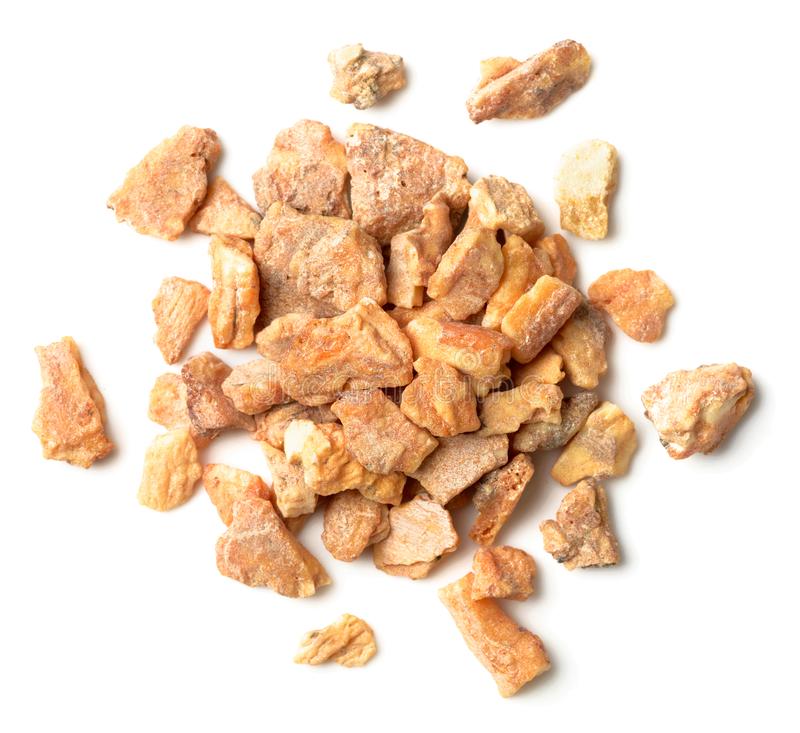
The benzoin melts at a moderate heat, it is then that the benzoic acid.
In the American continentThese plants are known as estoraque, while in Asia call it benzoin, but they are essentially the same. It has been used with speciality in the perfumery.
Benzoin and Estoraque resin
It is called benzoin to the resin that is exudes naturally or by incisions practiced on the estyrax benzoinThis tree grows in Java, Sumatra and in Thailand.
See solidifies rapidly on contact with air, and becomes hard and brittle. The benzoin melts at a moderate heat, it is then that the benzoic acid.

On the American continent, these plants are called estoraque, whereas in Asia call it benzoinbut they are essentially the same. It has been used with speciality in the perfumery.
2.4- Olibanum resin gum
The frankincense is an aromatic resin obtained from the tree Boswellia thurifera o Boswellia sacra. It is used as incense, and the Somalis use it as a chewing gum after meals.
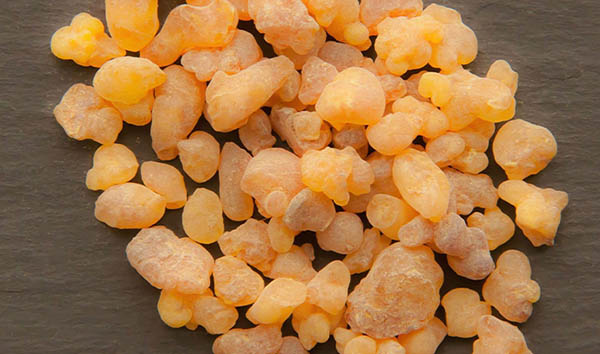
It grows in the north-east of Africain Arabia (the one from the Ẓufār) and in the region of Anatolia (Turkey). In ancient times, it was widely used for the production of incense, perfumes y ointments, to dilute ink in the papyriand also for embalm to the dead. In addition to its traditional uses, it is nowadays widely used as a oral stimulant, tonic and antiseptic.
Resin gum Olibanum
The frankincense is an aromatic resin obtained from the tree Boswellia thurifera o Boswellia sacra. It is used as incense, and the Somalis use it as a chewing gum after meals. Its name derives from the Arabic al-lubbān ("the milk".), referring to the milky sap that comes out when the olibanum tree is struck.

From colour tomarillo or reddish and with a very aromatic smell when burning. Its main origin is from a tree of Ethiopia called Olibanum. It is used in many religious ceremoniesand was highly appreciated in the seniority as it was used to embalm to the dead.
2.5- Amber Resin
The amber o succino (from Latin succinum) is a rfossilised esin of origin vegetableIt comes mainly from the remains of conifers and some angiosperms. Its name comes from Arabic, amber, 'that which floats on the sea', as it originally referred to the whale ambergris.
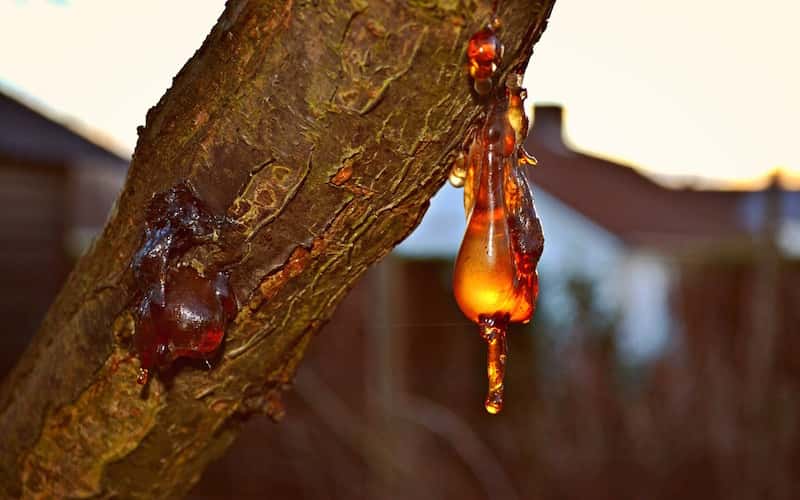
Brownish orange in colour, although there are yellow, honey-coloured and greenish varieties. It can be transparent o translucent and is considered a semi-precious stone. Appreciated for its natural colour and beauty since the times of the Neolithicamber is used in jewellery and as a healing agent. When burnt emits a very pleasant pungent odour.
Amber Resin
The amber o succino (from Latin succinum) is a rfossilised esin of origin vegetableIt comes mainly from the remains of conifers and some angiosperms. Its name comes from Arabic, amber, 'that which floats on the sea', as it originally referred to the whale ambergris.

Brownish orange in colour, although there are yellow, honey-coloured and greenish varieties. It can be transparent o translucent and is considered a semi-precious stone. Appreciated for its natural colour and beauty since the times of the Neolithicamber is used in jewellery and as a healing agent. When burnt emits a very pleasant pungent odour.
2.6- Rue
The rue (Route) is a shrub belonging to the family of the Rutaceaenative to the Mediterranean, Macaronesia and Southwest Asia. The best known species is the common rue Ruta graveolens. Traditionally used as a plant medicinalhas a very strong toxicitydepending on uses and dosages.
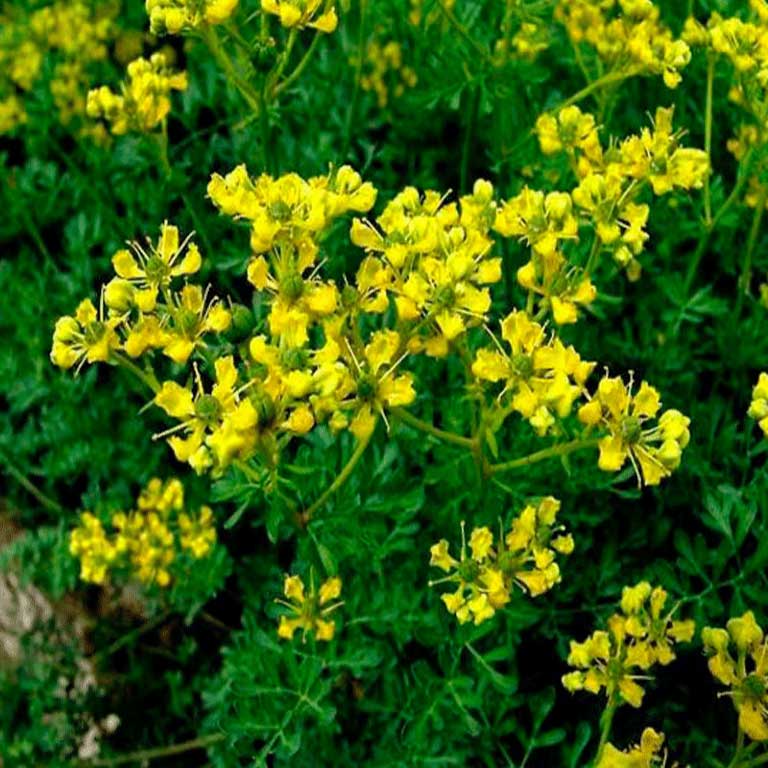
It was used in the kitchen European seniorityas well as in many recipes of the Classical Romebut was discontinued due to its extreme bitterness. It is used as incense but in reality it is their essence, extracted from leaveswhich at the mix it with another type of odourless resins provides that characteristic scent.
Ruda
The rue (Route) is a shrub belonging to the family of the Rutaceaenative to the Mediterranean, Macaronesia and Southwest Asia. The best known species is the common rue Ruta graveolens.

Traditionally used as a plant medicinalhas a very strong toxicitydepending on uses and dosages. It was used in the kitchen European seniorityas well as in many recipes of the Classical Romebut was discontinued due to its extreme bitterness. It is used as incense but in reality it is their essence, extracted from leaveswhich at the mix it with another type of odourless resins provides that characteristic scent.
2.7- Arabic gum
The Gum Arabic, yellowish and almost transparentis extracted from some of the acacias very abundant in Arabia. From off-white colouris extracted from the trunk and of the branches from certain shrubs growing in Persia and Asia Minor. These two resins are odourless.
This feature is a great advantage when it comes to mixingbecause absorb the aroma, the properties y energies from the oils we have chosen in combination.
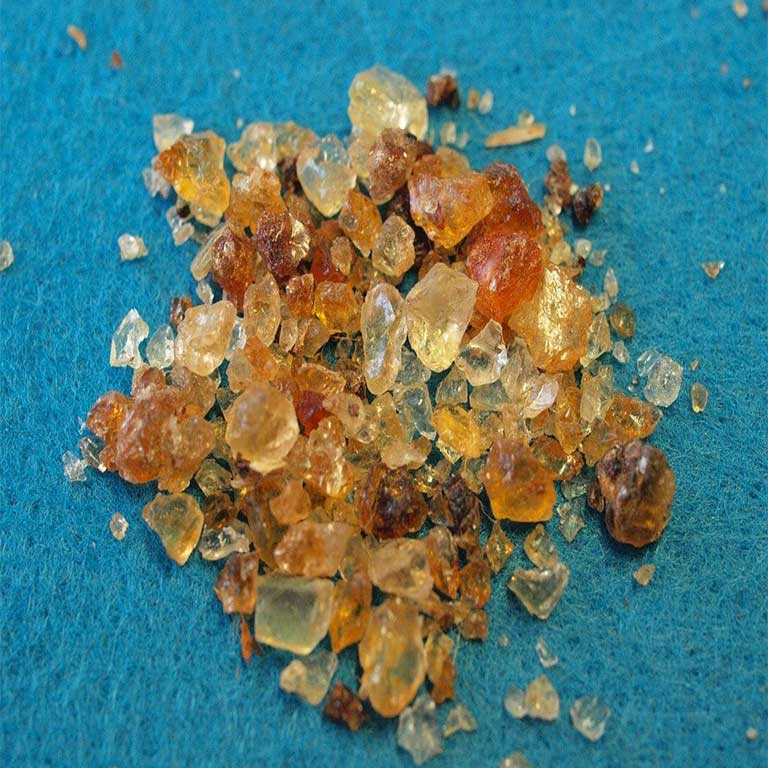
Gum Arabic
The Gum Arabic, yellowish and almost transparentis extracted from some of the acacias very abundant in Arabia. From off-white colouris extracted from the trunk and of the branches from certain shrubs growing in Persia and Asia Minor. These two resins are odourless.

This feature is a great advantage when it comes to mixingbecause absorb the aroma, the properties y energies from the oils we have chosen in combination.
2.8- Warehousing
Aromatic resin which is obtained from the branches of a shrub called "mastic growing throughout the Mediterranean region. It represents purity by its appearance in white and transparent grains. See obtains by means of incisions o scratches in the crust from mastictree, tree of the family of the terebinthaceae which is you can find in the coastal zones of the Mediterranean countries.
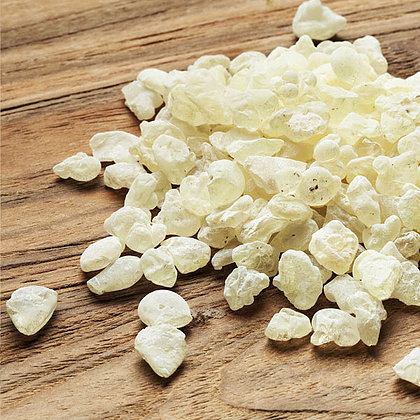
The almaciga at tear has a yellow colour pale, powdery surfaceis fructoseglassy, glassy, of opaline transparencyIt has a pleasant sweet smell and an aromatic resinous taste. See freeze at drops on the branches and is the most dear for being the purest. The statuary the use for paste the fragments from marble. The common seedbed at difference of the previous for its dark colour and by the impurities that contains.
Almáciga
Aromatic resin which is obtained from the branches of a shrub called "mastic growing throughout the Mediterranean region. It represents purity by its appearance in white and transparent grains. See obtains by means of incisions o scratches in the crust from mastictree, tree of the family of the terebinthaceae which is you can find in the coastal zones of the Mediterranean countries.

The almaciga at tear has a yellow colour pale, powdery surfaceis fructoseglassy, glassy, of opaline transparencyIt has a pleasant sweet smell and an aromatic resinous taste. See freeze at drops on the branches and is the most dear for being the purest. The statuary the use for paste the fragments from marble. The common seedbed at difference of the previous for its dark colour and by the impurities that contains.
3.- "Universal" incense
Universal" incense
It is the most commonly used today and the basis of the majority from incense "commercials". You can visit formed by a mix of the following incense: resin from pine, copal, storaque, myrrh, benzoin y frankincense.
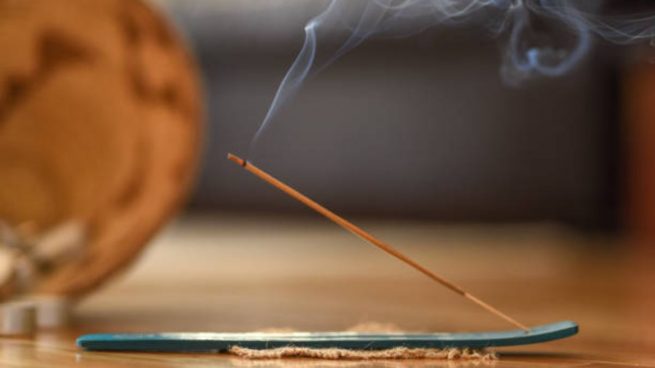
We can also add aloe y camphor by be addressed to of two medicinal plants. The aloe is a genre of plants that comprises more than 200 speciesthe most of them coming from south of Africa.
The juice resinous y bitter which is extracts of their sheets fleshy is used in medicine to heal wounds, bitesfor the dry skinthe congestion bronchialetc. Camphor is a white solid, crystalline and very smelly penetrating which is obtains of the branches from tree of the same name that also at uses at ointments for their antiseptic qualities y anaesthetics.
It is the most commonly used today and the basis of the majority from incense "commercials". You can visit formed by a mix of the following incense: resin from pine, copal, storaque, myrrh, benzoin y frankincense.

We can also add aloe y camphor by be addressed to of two medicinal plants. The aloe is a genre of plants that comprises more than 200 speciesthe most of them coming from south of Africa.
The juice resinous y bitter which is extracts of their sheets fleshy is used in medicine to heal wounds, bitesfor the dry skinthe congestion bronchialetc. Camphor is a white solid, crystalline and very smelly penetrating which is obtains of the branches from tree of the same name that also at uses at ointments for their antiseptic qualities y anaesthetics.
Main properties and characteristics
of the Resin to burn as Incense
Main properties and characteristics of the Resin to burn as Incense
- Copal purifies and cleanses the energies, and is also an expectorant and stimulant.
- Myrrh boosts the immune system, prevents infections and reduces fever.
- Benzoin is a relieving and expectorant, useful for bronchitis and irritable coughs.
- Olibanum is a powerful sedative for reducing and improving states of anxiety.
- Amber stimulates the thyroid and activates and improves blood circulation.
- Rue tones the arteries and heart, and normalises blood flow.
- Gum Arabic reduces cholesterol and improves satiety.
- Almaciga is a potent antibacterial that eliminates environmental microbes.
- Copal purifies and cleanses the energies, and is also an expectorant and stimulant.
- Myrrh boosts the immune system, prevents infections and reduces fever.
- Benzoin is a relieving and expectorant, useful for bronchitis and irritable coughs.
- Olibanum is a powerful sedative for reducing and improving states of anxiety.
- Amber stimulates the thyroid and activates and improves blood circulation.
- Rue tones the arteries and heart, and normalises blood flow.
- Gum Arabic reduces cholesterol and improves satiety.
- Almaciga is a potent antibacterial that eliminates environmental microbes.
Resin Properties
Resin Properties
Copal
Copal purifies and cleanses environmental energies. It is also expectorant, stimulating and uplifting.
Myrrh
Benjuí
Benzoin is anti-inflammatory and expectorant. Very useful for treating bronchitis and irritative coughs.
Olibanum
Amber
Amber stimulates the thyroid gland. It also activates and improves blood circulation and the number of white blood cells.
